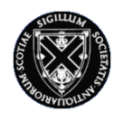Scottish Archaeological Internet Reports (SAIR)
Society of Antiquaries of Scotland, 2012. (updated 2023) https://doi.org/10.5284/1017938. How to cite using this DOI
Data copyright © Society of Antiquaries of Scotland unless otherwise stated
This work is licensed under the ADS Terms of Use and Access.
Primary contact
Society of Antiquaries of Scotland
National Museums Scotland
Chambers Street
Edinburgh
EH1 1JF
Scotland
Resource identifiers
- ADS Collection: 310
- DOI:https://doi.org/10.5284/1017938
- How to cite using this DOI
The Excavation of an Early Bronze Age Burnt Mound at Arisaig, Lochaber, Highland
Suddaby, Ian
with contributions by Torben Ballin, Michael Cressey and Clare Ellis; and illustrations by Karen Clarke and Leeanne Whitelaw
Scottish Archaeological Internet Reports 39 (2009)
0903903592
Abstract: During the upgrading of the A830(T), the 'Road to the Isles', the remains of a disturbed burnt mound deposit were discovered and later excavated during September and October 2005 by CFA Archaeology Ltd. This is the first such feature to have been excavated in this part of the Highlands.
The burnt mound was discovered lying partly below a modern field bank on the edge of Arisaig during a trial trenching evaluation. Excavation demonstrated that the feature was formed in an active fluvial environment and that, despite the rural and boggy location, it had suffered considerable damage since its formation, caused by both the fluvial action of the adjacent stream and by a field drain. No evidence was found for either a hearth or a formal trough. The implication of a small assemblage of local quartz from within the burnt material is discussed. The charcoal assemblage is compared to spectra of pollen from contemporary deposits of peat in the area. Studies of the nature and origin of the burnt material via the results of soil magnetic susceptibility and thin-section analyses are presented. Six radiocarbon dates from three associated contexts span the period from 2550 to 1900 BC and suggest the burnt mound accumulated during the Early Bronze Age.
Download report
| Scottish Archaeological Internet Report 39 | 1 Mb |







